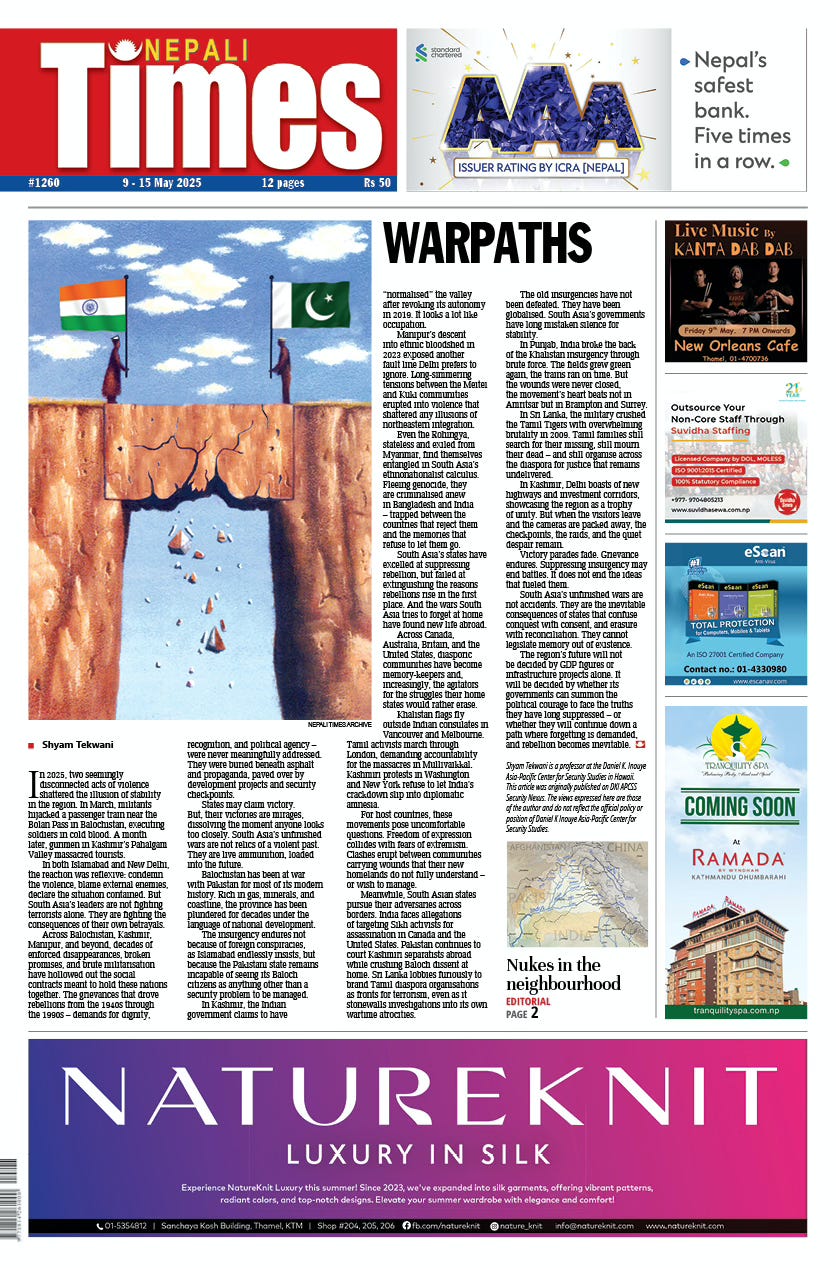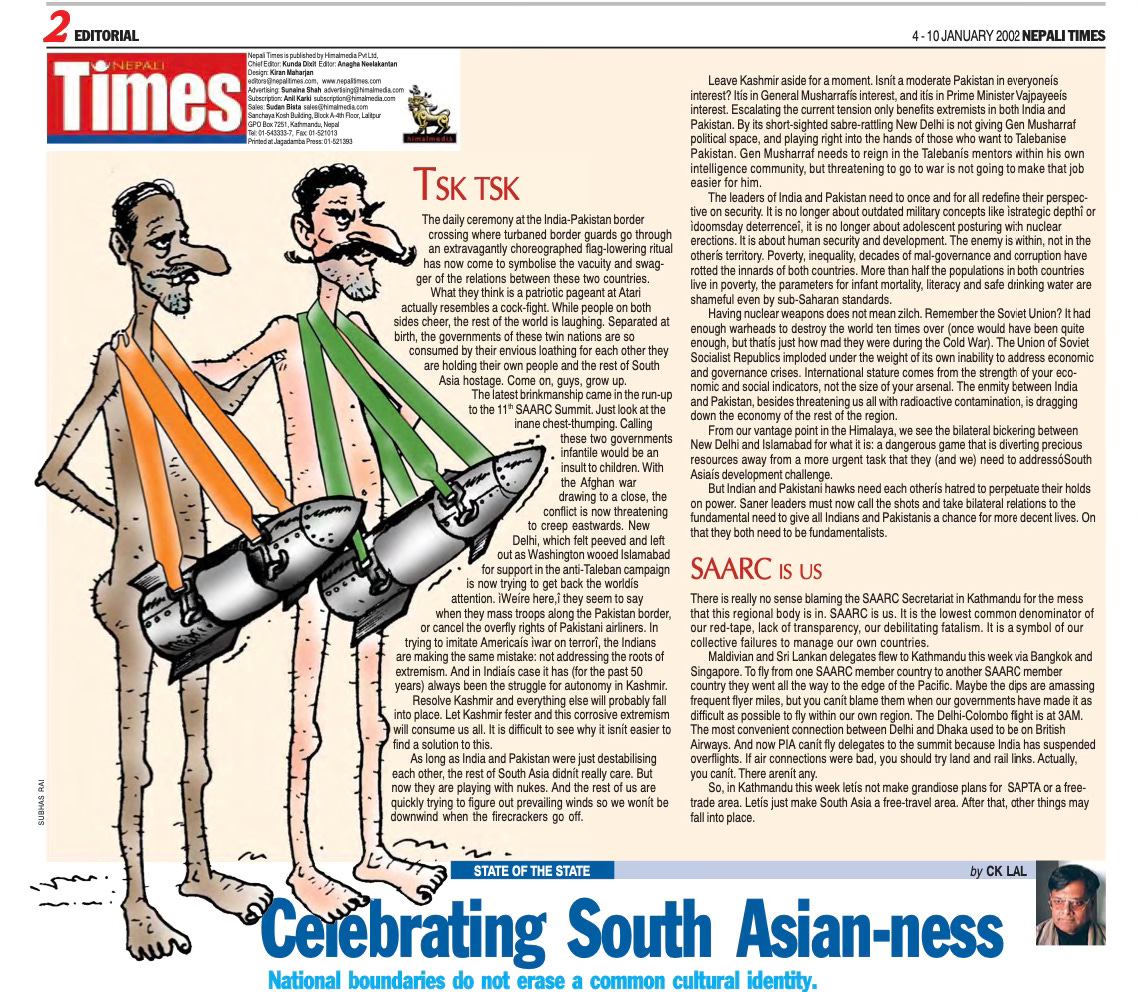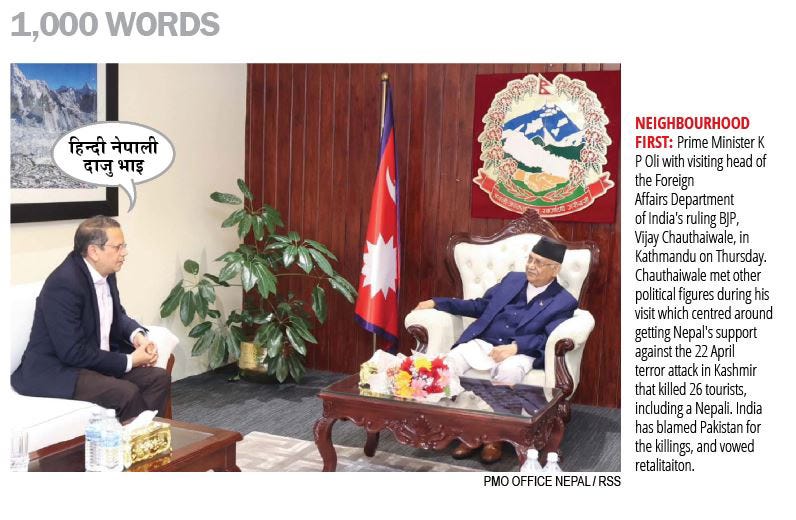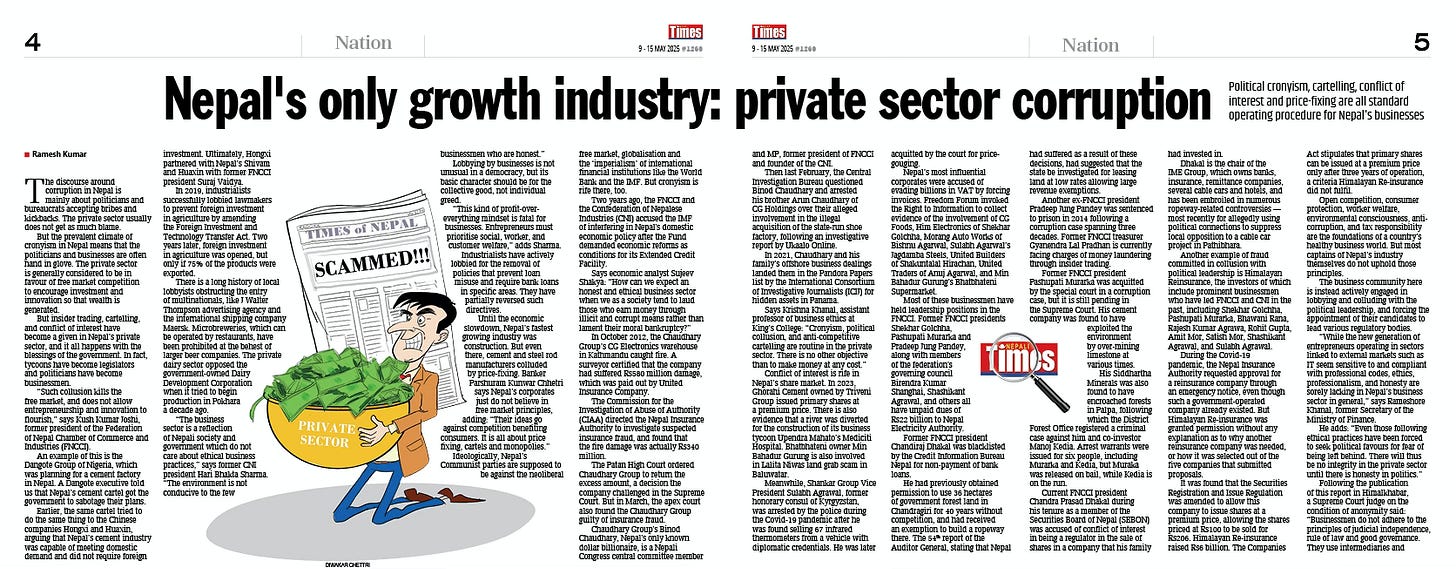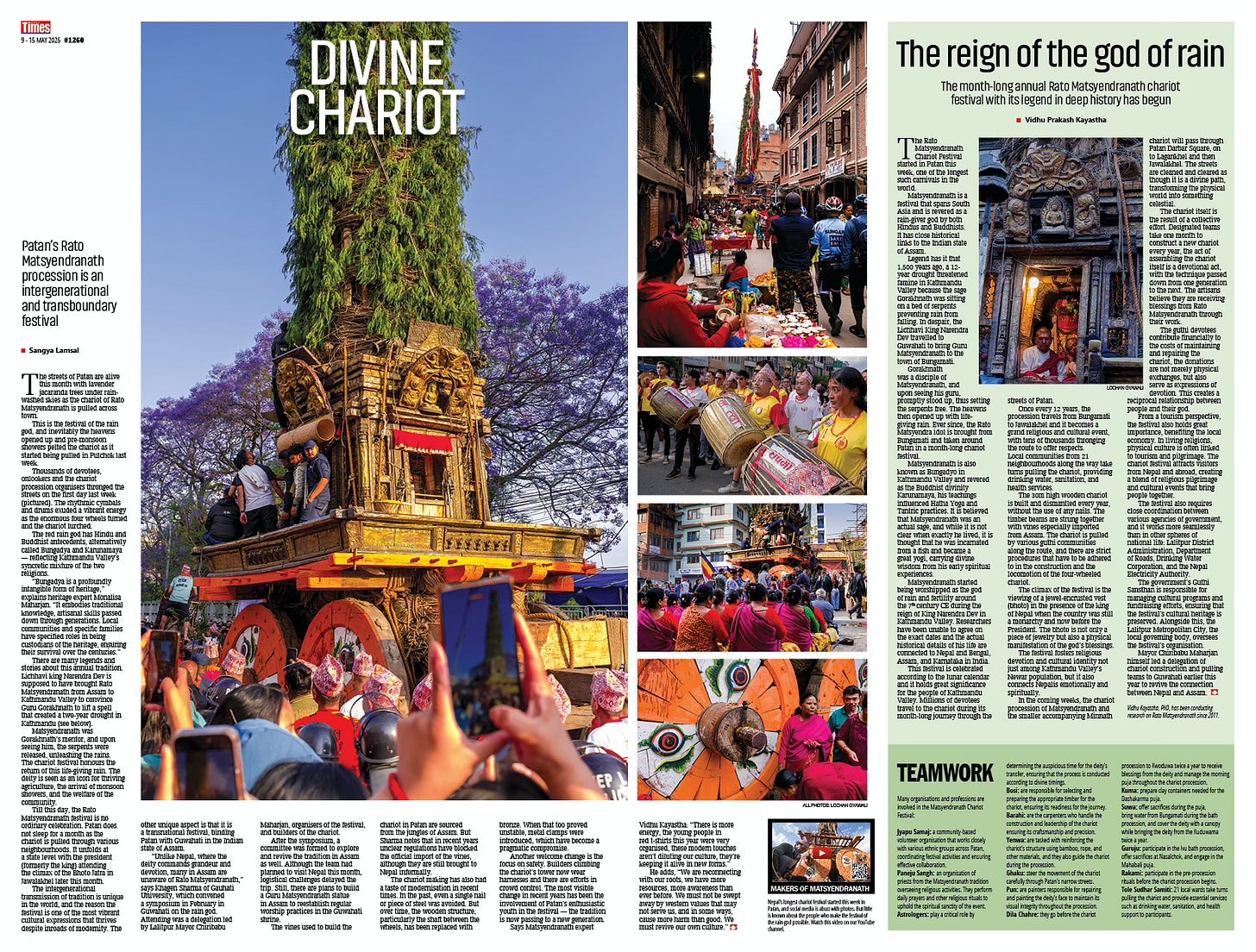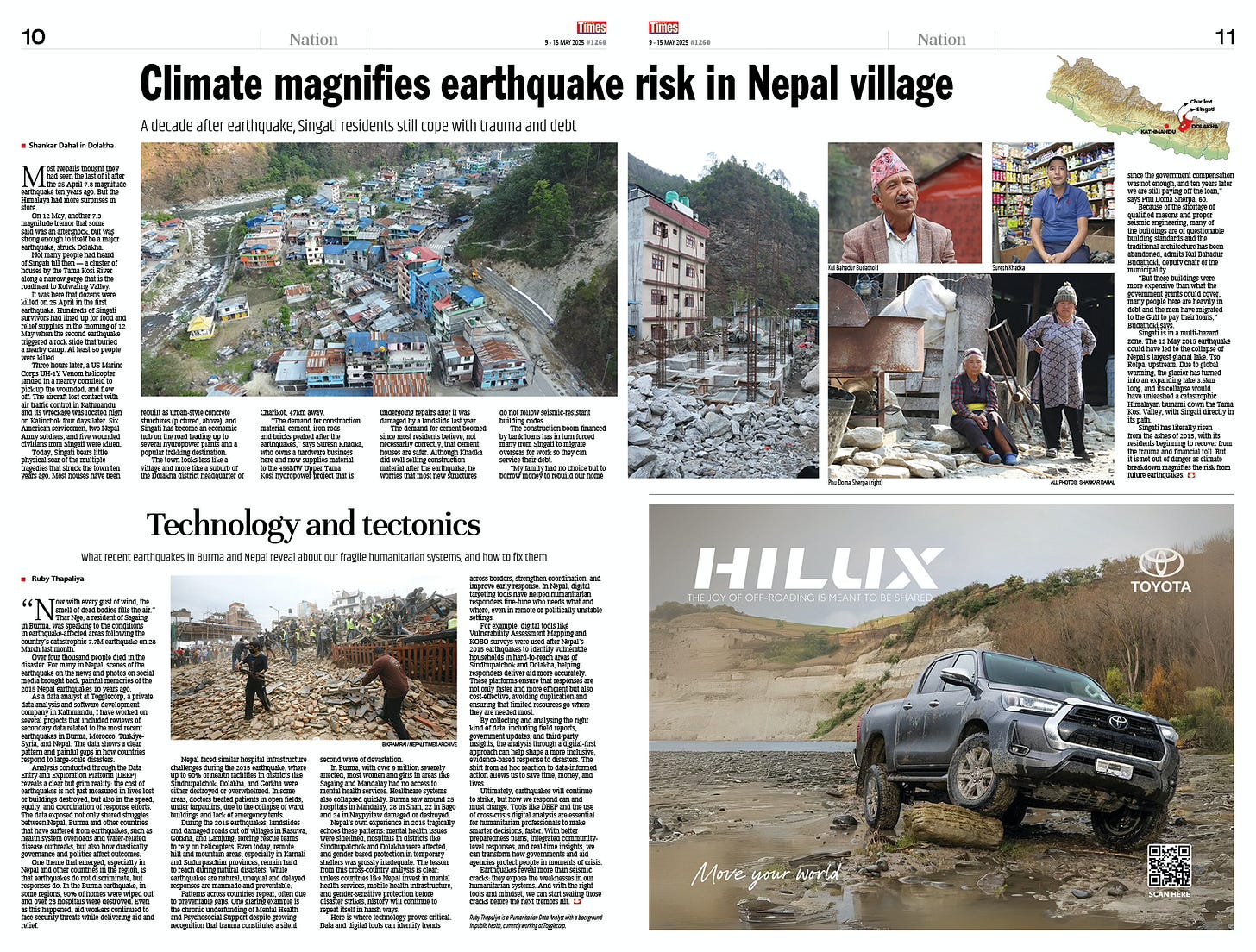Dear Fellow-South Asians,
If this was test cricket between India and Pakistan, I guess it would be declared a draw after rain stopped play? Once more, we are back from the brink of a war that could have easily escalated into a nuclear exchange.
The last time the two South Asian neighbours played nuclear roulette was after the suicide attack on the Indian parliament in December 2001. This was just after the 9/11 attacks, and America was busy bombing the caves of Tora Bora in Afghanistan with B-52s.
An on-again-off-again SAARC Summit was held in Kathmandu in January 2002, and the big question in everyone’s mind then was whether Indian Prime Minister Atal Bihari Vajpayee would shake hands with Gen Pervez Musharraf of Pakistan.
India and Pakistan had banned overflights by each other’s airlines (just as they did this time), and a Nepali Times page 1 curtain-raiser of the summit reported then that Gen Musharraf actually had to fly to Kathmandu taking a roundabout route via China.
They probably shook hands at a retreat in Nagarkot, but not in public. An Editorial in that #75 edition of 4-10 January 2002 was titled Tsk Tsk, and was illustrated with this X-rated cartoon by Subhas Rai.
Since I wrote that Editorial 23 years ago, allow me quote a part of it: ‘The governments of these twin nations are so consumed by self-perpetuated loathing of each other that they are holding their own people and the rest of South Asia hostage. Come on, guys, grow up … As long as India and Pakistan were just destabilising each other, the rest of the world wouldn't really care. But now they are playing with nukes.’
Twenty-three years have passed, and I found myself writing almost the same words in this week’s Editorial on page 2, Nukes in the Neighbourhood. Much water has flowed down the Indus since then, and India suspended the 1960 Indus Water Treaty and there is a real risk of escalation. The Himalaya is now both a nuclear and climate hotspot.
The India-Pakistan air corridor has been restored, but what will happen to the Indus Treaty? And what is to prevent another terrorist attack once more taking us all to the nuclear brink again?
The page 1 opinion (Warpath) is by Shyam Tekwani, professor at the Daniel K. Inouye Asia-Pacific Center for Security Studies in Hawaii, who steps back for a broader look at accumulated unresolved grievances that feed conflicts in the region from Balochistan, Kashmir, Sri Lanka, Manipur and Burma.
Elsewhere in this issue, business contributor Ramesh Kumar looks at Nepal’s chronic cronyism, and how it is not just bureaucrats and politicians who take bribes and kickbacks, many top tycoons are partners in crime. (Nepal’s Only Growth Industry: Private Sector Corruption, page 4-5).
The centrefold carries reports by Sangya Lamsal and culture expert Vidhu Prakash Kayastha on the month-long Rato Matsyendranath chariot festival, which they point out has intergenerational and transboundary significance (Divine Chariot and Reign of the God of Rain, page 6-7).
Photographs rendered into lovable Ghibli images have taken the world by storm. But, as Anil Raghuvanshi of ChildSafeNet warns on page 9, these playful AI-generated images carry hidden risks of child abuse (Ghiblification Is More Than Cute Pixels).
On 12 May 2015, a second 7.3M earthquake epicentred in Dolakha struck Nepal. In the town of Singati, hundreds of survivors had gathered to collect relief materials. More than 50 of them were killed when the quake triggered a rockfall. Today, Singati has rebuilt itself, but not necessarily in a safer way, says Shankar Dahal who travelled to the town. (Climate Magnifies Earthquake Risk in Nepal Village, page 10-11).
Finally, Ruby Thapaliya, a humanitarian data analyst with Toggle Corp, analyses the aftermath of the recent Burma earthquake and its lessons for Nepal (Technology and Tectonics, page 10).
That’s it for this week. Hope the readings are useful.
Kunda Dixit



